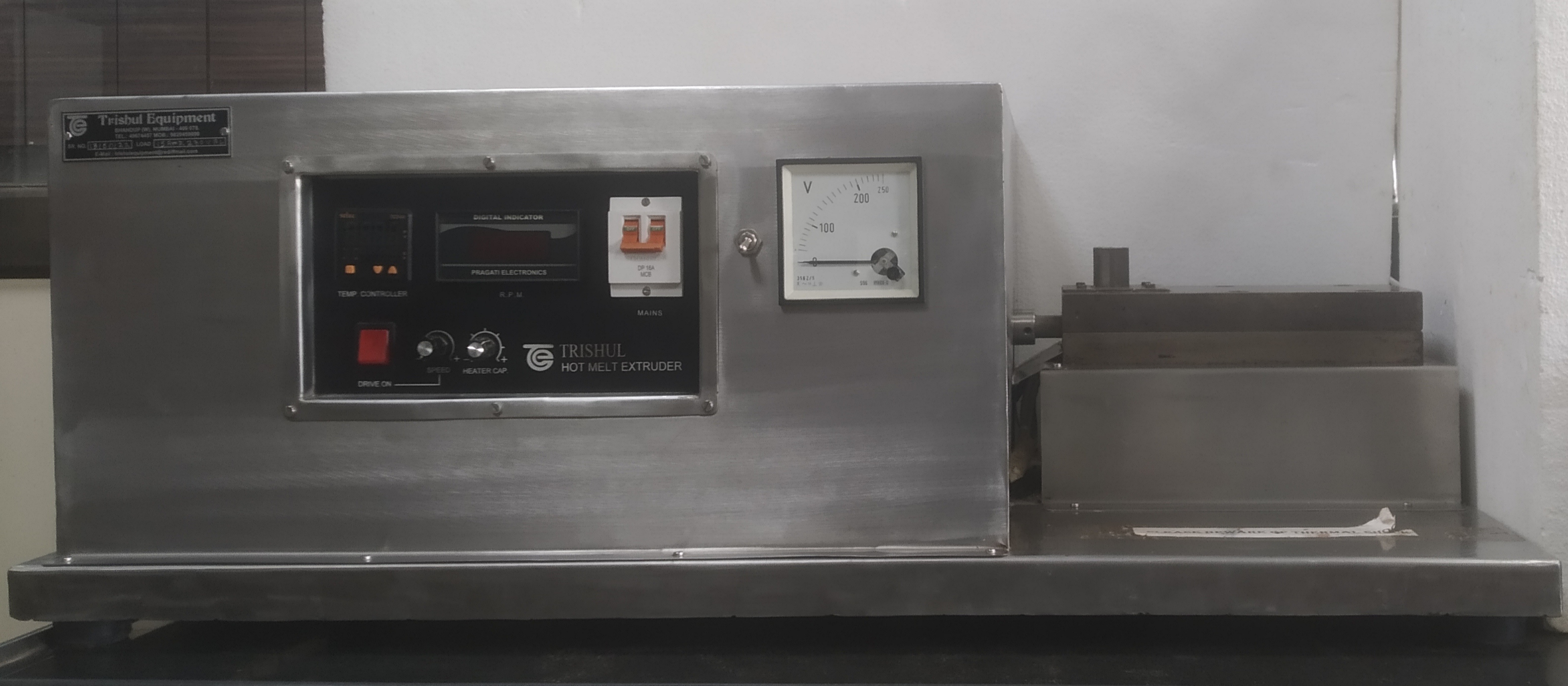This invention describes an apparatus, system, and method for the melt-mixing of waste thermoplastic polymers and inorganic particulate fillers to manufacture polymer composites under laboratory conditions. The apparatus is designed as a single screw extruder with a substantial batch volume capacity ranging from 30 cc to 50 cc and can process filler concentrations from 0-70% by weight. Key components include a housing, barrel plates, a cylindrical screw channel, a recirculation channel, an extruder screw with transport and mixing sections, a feed hopper unit, cartridge heating units, a die channel, and thermocouples. This design aims to enhance the efficiency and sustainability of waste material processing, offering a significant advancement in environmental management and polymer composite manufacturing.
Mechanical recycling of waste polymers is one of the most attractive research fields in the present-day context. However, the melt-mixing process of such polymers is often not encouraged by the researchers as commercially available extruders are not designed to handle such heterogeneous polymers and hard inorganic impurities. Moreover, existing extruders that can be used for scientific and laboratory-scale research are expensive and beyond the reach of many. To overcome these issues, this invention presents the design of a novel extruder that can facilitate the utilization of mixed polymeric waste and inorganic fillers of concentrations up to 50%. This extruder will particularly be useful to polymer recycling scientists and recycled polymer composites manufacturers.
- Cost Efficient: This technology has a lower fabrication cost.
- Large Batch Volume Capacity: It is capable of processing batch volumes in the range of 30 cc to 50 cc.
- High Filler Concentration: It can handle filler concentrations up to 70% by weight.
- Enhanced Mixing Efficiency: It incorporates a recirculation channel for uniform mixing.
- Adaptability: It is suitable for a variety of waste thermoplastic polymers and inorganic particulate fillers.
- Reduced Thermal Degradation: Diamond mixing pins help to minimize thermal-induced degradation during processing.
A pilot-scale recycling plant has been built with the GolDN extruder as the central apparatus. This facility includes capabilities for shredding, pre-heating, and conveying, allowing complete waste plastic to product conversion. Additionally, researchers have developed a supporting thermogravimetric analyzer with a large 200g sample size, specifically for testing the composites produced by GolDN. This analyzer incorporates material heterogeneity.
A pilot-scale recycling plant with a GolDN extruder, as central apparatus, has been built. Additional capabilities like shredding, pre-heating, and conveying allow complete waste plastic to product conversion.
9
The apparatus and method address significant environmental issues by providing a sustainable way to manage and repurpose waste plastics and inorganic fillers. This innovation can reduce pollution and mitigate health risks associated with improper waste disposal.
- Materials Engineering: Development of new composite materials with varied applications
- Industrial Waste Utilization: Efficiently processing industrial waste materials into reusable composite
- Other Industries/Applications: Polymer and Plastic Manufacturing, Recycling Industry, Environmental Engineering
Geography of IP
Type of IP
202221033039
422216

